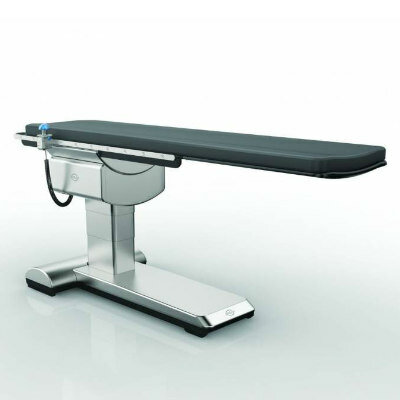MR, Vessel Architectural Imaging May Predict Tumor Response to Antiangiogenic Drugs
By MedImaging International staff writers
Posted on 18 Nov 2013
A combination of sophisticated imaging techniques may be able to differentiate which patients’ tumors will respond to treatment with antiangiogenic drugs and which will not. Posted on 18 Nov 2013
Researchers examined patients newly diagnosed with the dangerous brain tumor glioblastoma and treated with the antiangiogenic agent cediranib. They reported that those patients for whom cediranib rapidly “normalized” abnormal blood vessels surrounding their tumors and increased blood flow within tumors survived substantially longer than did patients in whom cediranib did not increase blood flow.
The findings were published ahead of print November 4, 2013, in early edition of the journal Proceedings of the National Academy of Sciences of the United States of America (PNAS). “Two recent phase III trials of another antiangiogenic drug, bevacizumab, showed no improvement in overall survival for glioblastoma patients, but our study suggests that only a subset of such patients will really benefit from these drugs,” explained Tracy Batchelor, MD, director of the Pappas Center for Neuro-Oncology at the Massachusetts General Hospital (MGH; Boston, MA, USA; www.massgeneral.org) Cancer Center, and co-lead and corresponding author of the current study. “Our results also verify that normalization of tumor vasculature appears to be the way that antiangiogenic drugs enhance the activity of chemotherapy and radiation treatment.”
Antiangiogenic drugs, which suppress the action of factors that stimulate the growth of blood vessels, were first used for cancer treatment under the premise that they would act by “starving” tumors of their blood supply. However, since then, new evidence has suggested that the drugs’ benefits come through their capability to “normalize” the abnormal, leaky vessels that typically surround and penetrate tumors, optimizing delivery of both chemotherapy agents and the oxygen that is required for effective radiation therapy. This hypothesis was first suggested and then developed by Rakesh K. Jain, PhD, senior author of the current study and director of the Steele Laboratory for Tumor Biology in the MGH department of radiation oncology.
A 2007 clinical study led by Dr. Batchelor found evidence suggesting that cediranib, which has not yet received US Food and Drug Administration (FDA) approval, could temporarily normalize tumor vasculature in recurrent glioblastoma, but it was not clear what role normalization might have in patients’ survival. In the past few years, several research groups, with leadership from Drs. Batchelor, Jain, and other coauthors of the current study, reported evidence that cediranib alone improved blood perfusion within recurrent glioblastoma tumors in a subset of patients and improved their survival. A Nature Medicine study published earlier in 2013 used a technique called vessel architectural imaging (VAI), developed at the Martinos Center for Biomedical Imaging at MGH, to reveal that cediranib on its own improved the delivery of oxygen within tumors of some patients with recurrent glioblastoma.
VAI utilizes a temporal shift in the magnetic resonance imaging (MRI) signal, forming the basis for vessel caliber estimation, which can reveal new data on vessel type and function not evaluated by any other noninvasive imaging technique. This technology can provide new biologic clues into the treatment of patients with cancer.
Patients in the current study were participants in a clinical trial of cediranib plus radiation and chemotherapy for postsurgical treatment of newly diagnosed glioblastoma. Among the study participants in that trial, 40 also had innovative brain imaging with VAI and other MRI) techniques. Whereas all but one of the subjects in the overall trial demonstrated some evidence of vascular normalization and reduced edema (tissue swelling that can be harmful within the brain), only 20 of 40 patients were found to have persistent improvement in vessel perfusion. VAI also revealed improved oxygen delivery only in the patients with improved perfusion. Those patients survived on average nine months longer—26 months, compared with 17 months—than did those whose perfusion levels remained stable or worsened. A comparison group of glioblastoma patients treated with radiation and chemotherapy only survived an average of 14 months.
“It’s quite likely that the results we’ve found with cediranib will apply to other antiangiogenics,” Dr. Batchelor remarked. “In fact a presentation at a recent meeting showed that patients with improved perfusion from bevacizumab were also the ones in that study who lived longer. More research is needed, but these findings suggest that MR imaging techniques should play an essential role in future studies of antiangiogenic drugs in glioblastoma and possibly other types of solid tumors. We’ve received National Cancer Institute funding to study this approach with bevacizumab treatment, and we will also be investigating tumor delivery of chemotherapy and oxygen status using combined MR/PET [positron emission tomography] techniques at the Martinos Center’s MR/PET facility.”
Dr. Jain added, “We originally introduced the normalization hypothesis for antiangiogenic treatment in 2001, but it’s taken more than a decade to confirm that vascular normalization actually increases tumor perfusion and that increased perfusion, rather than tumor starvation, is what improves survival. This study provides compelling evidence that normalization-induced increased vessel perfusion is the mechanism of benefit in glioblastoma patients.”
Related Links:
Massachusetts General Hospital














